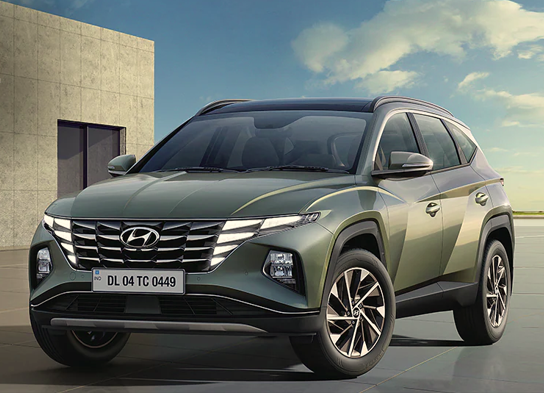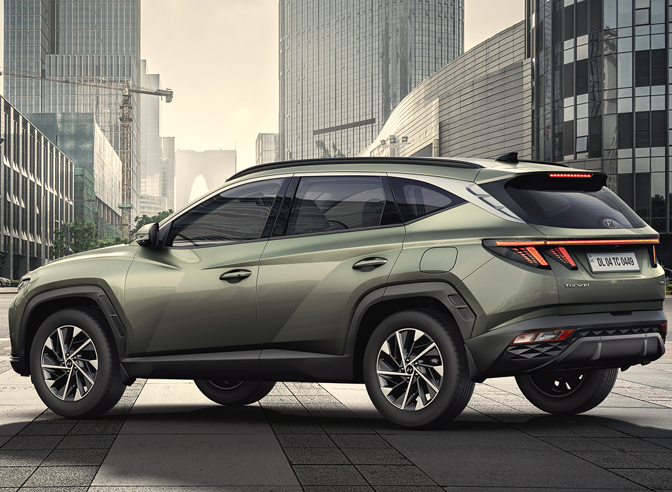
New Delhi:
The Indian subsidiary of South Korean car manufacturer Hyundai Motor India on Wednesday unveiled the 4th-gen Tucson sports utility vehicle (SUV) in the country. The model will be launched on August 4 and bookings will open on July 18.The premium SUV which will compete with the likes of Volkswagen Tiguan, Citroen C5 Aircross and the recently-launched Jeep Compass, will come with 19 new features of Hyundai SmartSense, thereby introducing Level-2 Advanced Driving Assistance Systems (L2 ADAS) – a first for any Hyundai vehicle in India. Going forward, the carmaker is expected to introduce it across most of its model range.
“ADAS has a lot of potential, even more so in a country like India where driving is compromised because standards are not very strict. Going forward, in case we get a good response we will see how it can be adopted in other models as well,” Tarun Garg, Director- Sales & Marketing, Hyundai Motor India, told ETAuto.
With the new-gen Tuscon, the carmaker is aiming to strengthen its presence in the SUV market in India by targeting the already existing Hyundai customers in the age group of 30-45 years. “These are the customers who own a Creta, Venue and now looking to upgrade into the Tucson. About 68% of 3rd-gen Tucson customers were existing Hyundai customers,” Garg said.
The company expects this segment of premium SUVs to reach sales volumes of up to 55,000 units by 2025. Currently, it stands at about 40,000 unit sales per annum.
With a gradual change in income levels of consumers, a decline in the average age of high priced vehicle owners, and an increased focus on safety, automakers in India are testing many technology trends in the high-end products of their portfolios to attract their young consumers. One among these is the emerging autonomous driving technology, which is a step-by-step development involving five distinct levels of autonomous driving.
In the Indian auto market, Mahindra & Mahindra (M&M) introduced L2 ADAS for its recently launched XUV700 and MG Motor offers it in the top trim of Astor launched in October last year.
Owing to the changes in market dynamics, the country’s second largest carmaker has also been working on realigning its business strategy by strategically moving away from entry level small cars, focusing on more products in the SUV segment and bringing in technology-rich features.
Hyundai’s new Tucson will be manufactured in India, however just like the outgoing model it is not considered for exports. It will be sold through Hyundai’s 246 signature networks present in 125 cities, which already sell models like the i20 N Line and a few variants of Alcazar.
The 2022 model will come with petrol and diesel powertrains, mated with six and eight-speed automatic transmissions, respectively. Both the trims feature two-liter engines generating an output of 156 PS and 186 PS of power, respectively.
Globally, the company sells Tucson in two versions of short wheelbase and long wheelbase. In 2021, Hyundai sold 4.85 lakh units of the model, mainly in the US, Europe, and Korea. Since its launch in 2004, it has clocked global cumulative sales of 70 lakh units. However, in India, Tucson’s sales volumes have remained feeble and managed to clock cumulative sales of just 6,214 units in the last five fiscal years.
| Domestic Sales (in units) | FY18 | FY19 | FY20 | FY21 | FY22 |
| Tucson | 1,775 | 1,538 | 699 | 980 | 1,222 |
First launched in India in 2005, followed by the 2nd-gen model in 2009, the 3rd-gen model of the Tucson brand was introduced to the market in 2016 at an introductory price ranging between INR 18.99 lakh and INR 24.99 lakh (ex-showroom).
In 2020, the carmaker also launched an improved version of the Tucson SUV in India, with a starting price of INR 22.30 lakh.
It is yet to be seen how the 4th-gen Tucson with new ADAS features will help the carmaker to establish its presence in the segment.
Going forward, Hyundai said that the situation of chip shortage has been improving, however the company is still cautious. With a total bookings backlog of 130,000 units, its Creta has the highest waiting period of 4 months.
The carmaker’s current capacity stands at about 800,000 units. The company shared that it has no short-term plans to expand capacity, but it is on a reviewing stage and will work on this depending upon “when we will need and how to increase.”
Also Read:
















